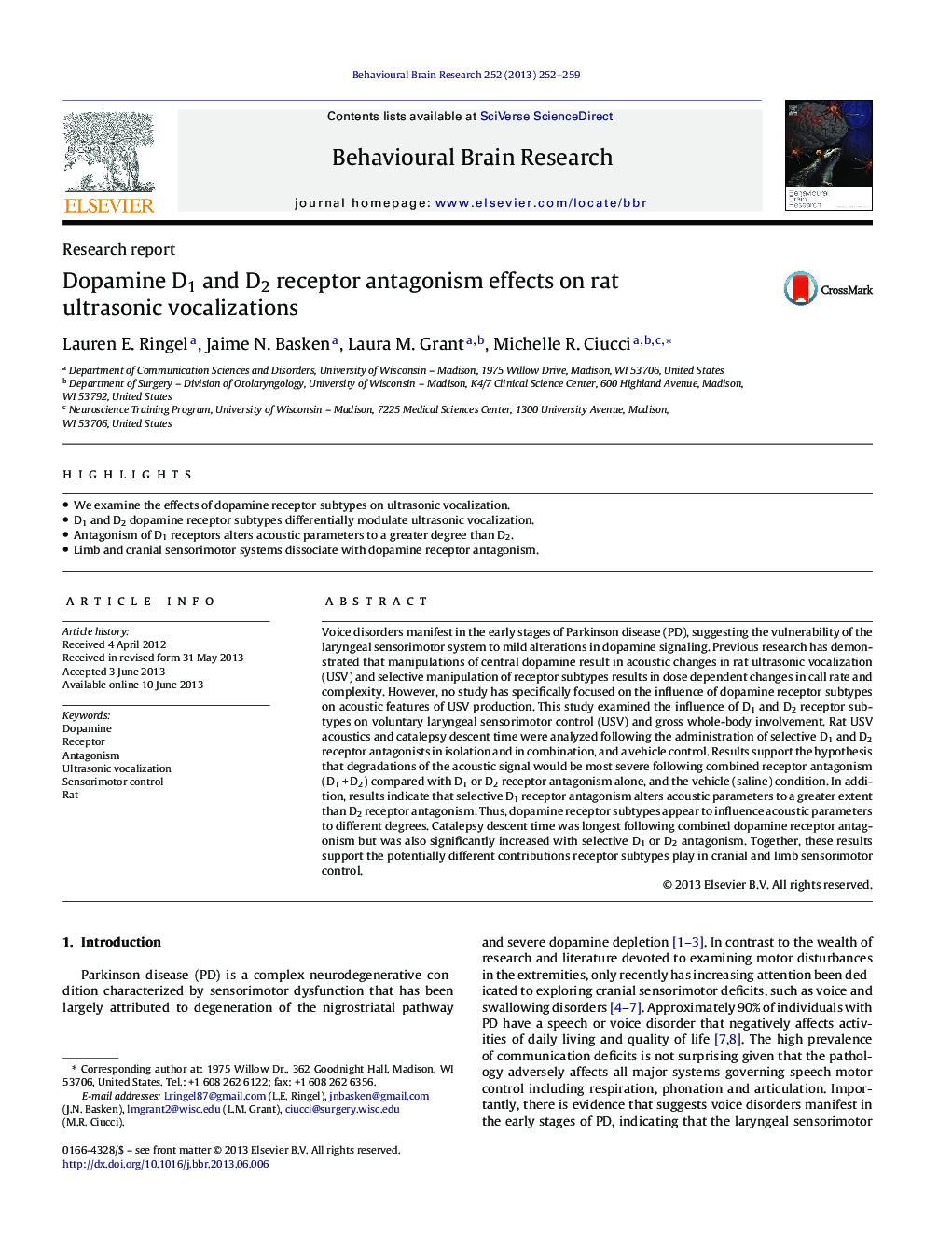| Article ID | Journal | Published Year | Pages | File Type |
|---|---|---|---|---|
| 4312614 | Behavioural Brain Research | 2013 | 8 Pages |
•We examine the effects of dopamine receptor subtypes on ultrasonic vocalization.•D1 and D2 dopamine receptor subtypes differentially modulate ultrasonic vocalization.•Antagonism of D1 receptors alters acoustic parameters to a greater degree than D2.•Limb and cranial sensorimotor systems dissociate with dopamine receptor antagonism.
Voice disorders manifest in the early stages of Parkinson disease (PD), suggesting the vulnerability of the laryngeal sensorimotor system to mild alterations in dopamine signaling. Previous research has demonstrated that manipulations of central dopamine result in acoustic changes in rat ultrasonic vocalization (USV) and selective manipulation of receptor subtypes results in dose dependent changes in call rate and complexity. However, no study has specifically focused on the influence of dopamine receptor subtypes on acoustic features of USV production. This study examined the influence of D1 and D2 receptor subtypes on voluntary laryngeal sensorimotor control (USV) and gross whole-body involvement. Rat USV acoustics and catalepsy descent time were analyzed following the administration of selective D1 and D2 receptor antagonists in isolation and in combination, and a vehicle control. Results support the hypothesis that degradations of the acoustic signal would be most severe following combined receptor antagonism (D1 + D2) compared with D1 or D2 receptor antagonism alone, and the vehicle (saline) condition. In addition, results indicate that selective D1 receptor antagonism alters acoustic parameters to a greater extent than D2 receptor antagonism. Thus, dopamine receptor subtypes appear to influence acoustic parameters to different degrees. Catalepsy descent time was longest following combined dopamine receptor antagonism but was also significantly increased with selective D1 or D2 antagonism. Together, these results support the potentially different contributions receptor subtypes play in cranial and limb sensorimotor control.
